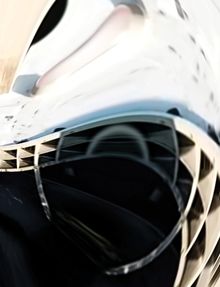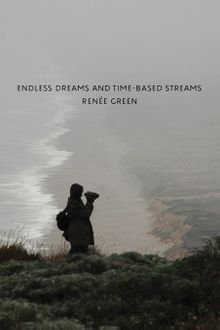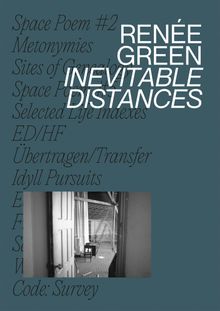ARTIST MONOGRAPHS
|
|
in stock $55.00 Free Shipping UPS GROUND IN THE CONTINENTAL U.S. |
 Renée Green: Pacing
Renée Green: Pacing
Published by Carpenter Center for the Visual Arts, Harvard University.
Foreword by Dan Byers. Text by Renée Green, Nicholas Korody, Fred Moten, Nora M. Alter, Mason Leaver-Yap, William S. Smith, Yvonne Rainer, Gloria Sutton.
American artist Renée Green (born 1959) spent two years engaged with the Carpenter Center for the Visual Arts at Harvard University, during which she presented a series of interlinked public programs and exhibitions, culminated with her major exhibition Within Living Memory (2018). Green’s Carpenter project, Pacing, is a meditation spurred by inhabiting an architectural icon—Le Corbusier’s Carpenter Center—while exploring the historical and institutional legacies of modernism’s other forms, including cinema, visual art, poetry, music and literature.
This handsome publication illuminates Green’s unfolding process, with a sequence of exhibitions that took place from 2015 and culminating in Pacing: Facing in Toronto; Tracing in Como, Italy; Placing in Berlin; Spacing in Lisbon; and Begin Again, Begin Again in Los Angeles. The result is a meditation on creative processes across histories and media, partially inspired by two architectural icons: Rudolf M. Schindler and Le Corbusier. Despite grand ambitions, Le Corbusier was only able to realize two buildings in the Americas, the Carpenter Center in Cambridge, Massachusetts, and Casa Curuchet, in La Plata, Argentina. In Pacing, dreams, projections and geographically distant buildings are put into dialogue through time, weaving a layered constellation of unexpected relations.
Lavishly illustrated, Renée Green: Pacing features new texts by Gloria Sutton and Fred Moten, and brings together a series of previously unpublished conversations between the artist and Yvonne Rainer, Nora M. Alter and Mason Leaver-Yap. Additional contributions are provided by Nicholas Korody, William S. Smith and Carpenter Center director Dan Byers.
PUBLISHER
Carpenter Center for the Visual Arts, Harvard University
BOOK FORMAT
Paperback, 9 x 11.75 in. / 300 pgs / 266 color.
PUBLISHING STATUS
Pub Date 1/12/2021
Active
DISTRIBUTION
D.A.P. Exclusive
Catalog: SPRING 2021 p. 63
PRODUCT DETAILS
ISBN 9781735230504 TRADE
List Price: $50.00 CAD $70.00 GBP £44.00
AVAILABILITY
In stock
in stock $50.00 Free Shipping UPS GROUND IN THE CONTINENTAL U.S. |
 Camino Road
Camino Road
Published by Primary Information.
By Renée Green.
Originally published in 1994, Camino Road is the debut novel of acclaimed New York–based artist and writer Renée Green (born 1959). Set between the late 1970s and early 1980s, and combining the genres of road novel, countercultural memoir, travel journal, epistolary novel and screenplay, it is the record of the mind of a young woman coming of age as an artist, traveling in Mexico and exploring the bohemian milieu of 1980s New York.
Serving as both homage to and parody of the historically male-dominated genre of the road novel, Camino Road interrogates the tropes of the form through the unusual perspective of a young woman. The relationship of language to self-formation is demonstrated by the protagonist Lyn’s attempts to learn Spanish. Accordingly, the book is divided into an English half and a Spanish half.
Published as an artist’s book for the Reina Sofía group exhibition The Raw and the Uncooked, the book includes an appendix with photographs and ephemera from Madrid’s 1980s movida punk movement.
PUBLISHER
Primary Information
BOOK FORMAT
Paperback, 4 x 7 in. / 120 pgs / 12 bw.
PUBLISHING STATUS
Pub Date 4/13/2021
Active
DISTRIBUTION
D.A.P. Exclusive
Catalog: SPRING 2021 p. 63
PRODUCT DETAILS
ISBN 9781734489781 TRADE
List Price: $16.00 CAD $22.00
AVAILABILITY
In stock
in stock $16.00 Free Shipping UPS GROUND IN THE CONTINENTAL U.S. |
 Renée Green: Endless Dreams and Time-Based Streams
Renée Green: Endless Dreams and Time-Based Streams
Published by Yerba Buena Center for the Arts.
Text by Betti-Sue Hertz, Lia Gangitano, Ros Gray, Lisa Le Feuvre.
PUBLISHER
Yerba Buena Center for the Arts
BOOK FORMAT
Paperback, 6 x 9 in. / 144 pgs / 70 color / 30 bw.
PUBLISHING STATUS
Pub Date 6/30/2011
Out of print
DISTRIBUTION
D.A.P. Exclusive
Catalog: FALL 2010 p. 100
PRODUCT DETAILS
ISBN 9780982678909 TRADE
List Price: $35.00 CAD $40.00
AVAILABILITY
Not available
STATUS: Out of print | 00/00/00 For assistance locating a copy, please see our list of recommended out of print specialists |
 Renée Green: Ongoing Becomings1989-2009
Renée Green: Ongoing Becomings1989-2009
Published by JRP|Ringier.
Edited by Nicole Schweitzer. Text by Diedrich Diederichsen, Gloria Sutton, Nora Alter, Juliane Rebentisch.
PUBLISHER
JRP|Ringier
BOOK FORMAT
Paperback, 9.25 x 11.25 in. / 160 pgs / 100 color / 40 bw.
PUBLISHING STATUS
Pub Date 11/30/2009
Active
DISTRIBUTION
D.A.P. Exclusive
Catalog: FALL 2009 p. 89
PRODUCT DETAILS
ISBN 9783037640319 TRADE
List Price: $55.00 CAD $72.50 GBP £25.00
AVAILABILITY
In stock
in stock $55.00 Free Shipping UPS GROUND IN THE CONTINENTAL U.S. |

